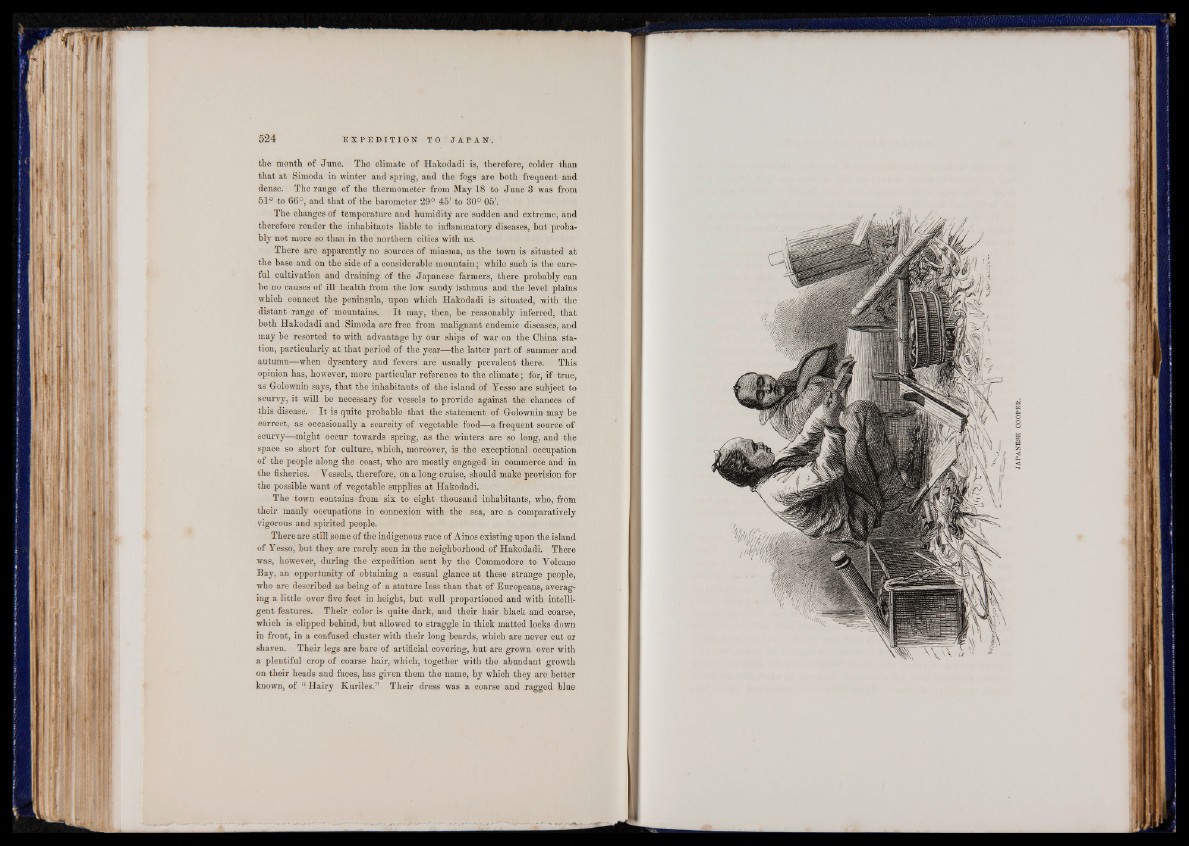
the month of June. The climate of Hakodadi is, therefore, colder than
that at Simoda in winter and spring, and the fogs are both frequent and
dense. The range of the thermometer from May 18 to June 3 was from
51° to 66°, and that of the barometer 29° 45' to 30° 05.'.
The changes of temperature and humidity are sudden and extreme, and
therefore render the inhabitants liable to inflammatory diseases, but probably
not more so than in the northern cities with us.
There are apparently no sources of miasma, as the town is situated at
the base and on the side of a considerable mountain; while such is the careful
cultivation and draining of the Japanese farmers, there probably can
be no causes of ill health from the low sandy isthmus and the level plains
which connect the peninsula, upon which Hakodadi is situated, with the
distant range of mountains. I t may, then, be reasonably inferred, that
both Hakodadi and Simoda are free from malignant endemic diseases, and
may be resorted to with advantage by our ships of war on the China station,
particularly at that period of the year—the latter part of summer and
autumn—when dysentery and fevers are usually prevalent there. This
opinion has, however, more particular reference to the climate; for, if true,
as Golownin says, that the inhabitants of the island of Yesso are subject to
scurvy, it will be necessary for vessels to provide against the chances of
this disease. I t is quite probable that the statement of G-olownin may be
correct, as occasionally a scarcity of vegetable food—a frequent source of
scurvy—might occur towards spring, as the winters are so long, and the
space so short for culture, which, moreover, is the exceptional occupation
of the people along the coast, who are mostly engaged in commerce and in
the fisheries. Vessels, therefore, on a long cruise, should make provision for
the possible want of vegetable supplies at Hakodadi.
The town contains from six to eight thousand inhabitants, who, from
their manly occupations in connexion with the sea, are a comparatively
vigorous and spirited people.
There are still some of the indigenous race of Ainos existing upon the island
of Yesso, but they are rarely seen in the neighborhood of Hakodadi. There
was, however, during the expedition sent by the Commodore to Volcano
Bay, an opportunity of obtaining a casual glance at these strange people,
who are described as being of a stature less than that of Europeans, averaging
a little over five feet in height, but well proportioned and with intelligent
features. Their color is quite dark, and their hair black and coarse,
which is clipped behind, but allowed to straggle in thick matted locks down
in front, in a confused cluster with their long beards, which are never cut or
shaven. Their legs are bare of artificial covering, but are grown over with
a plentiful crop of coarse hair, which, together with the abundant growth
on their heads and faces, has given them the name, by which they are better
known, of “ Hairy Kuriles.” Their dress was a coarse and ragged blue